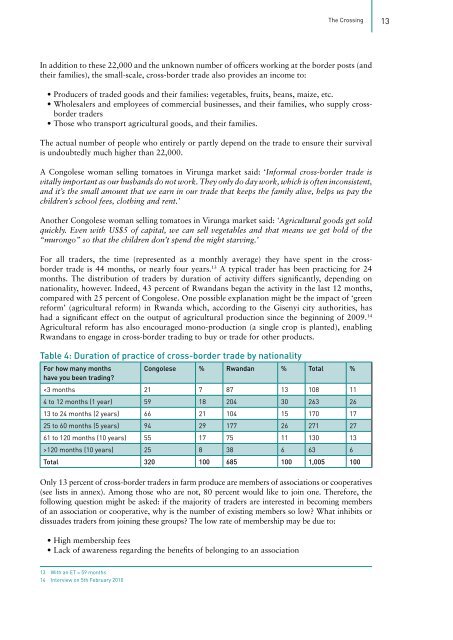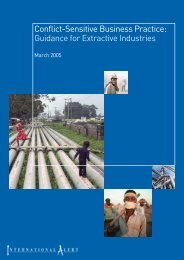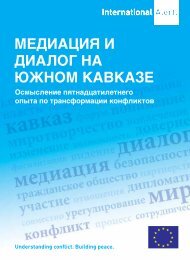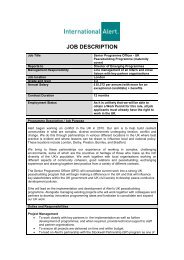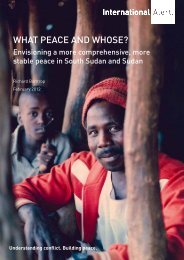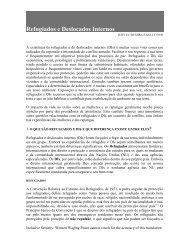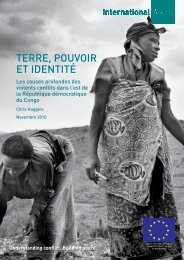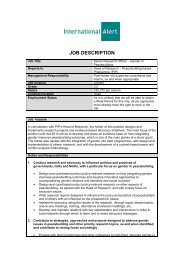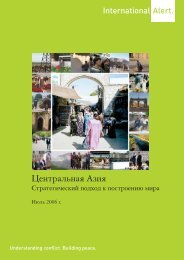The crossing English Version - International Alert
The crossing English Version - International Alert
The crossing English Version - International Alert
- No tags were found...
Create successful ePaper yourself
Turn your PDF publications into a flip-book with our unique Google optimized e-Paper software.
<strong>The</strong> Crossing13In addition to these 22,000 and the unknown number of officers working at the border posts (andtheir families), the small-scale, cross-border trade also provides an income to:• Producers of traded goods and their families: vegetables, fruits, beans, maize, etc.• Wholesalers and employees of commercial businesses, and their families, who supply crossbordertraders• Those who transport agricultural goods, and their families.<strong>The</strong> actual number of people who entirely or partly depend on the trade to ensure their survivalis undoubtedly much higher than 22,000.A Congolese woman selling tomatoes in Virunga market said: ‘Informal cross-border trade isvitally important as our husbands do not work. <strong>The</strong>y only do day work, which is often inconsistent,and it’s the small amount that we earn in our trade that keeps the family alive, helps us pay thechildren’s school fees, clothing and rent.’Another Congolese woman selling tomatoes in Virunga market said: ‘Agricultural goods get soldquickly. Even with US$5 of capital, we can sell vegetables and that means we get hold of the“murongo” so that the children don’t spend the night starving.’For all traders, the time (represented as a monthly average) they have spent in the crossbordertrade is 44 months, or nearly four years. 13 A typical trader has been practicing for 24months. <strong>The</strong> distribution of traders by duration of activity differs significantly, depending onnationality, however. Indeed, 43 percent of Rwandans began the activity in the last 12 months,compared with 25 percent of Congolese. One possible explanation might be the impact of ‘greenreform’ (agricultural reform) in Rwanda which, according to the Gisenyi city authorities, hashad a significant effect on the output of agricultural production since the beginning of 2009. 14Agricultural reform has also encouraged mono-production (a single crop is planted), enablingRwandans to engage in cross-border trading to buy or trade for other products.Table 4: Duration of practice of cross-border trade by nationalityFor how many monthshave you been trading?Congolese % Rwandan % Total %120 months (10 years) 25 8 38 6 63 6Total 320 100 685 100 1,005 100Only 13 percent of cross-border traders in farm produce are members of associations or cooperatives(see lists in annex). Among those who are not, 80 percent would like to join one. <strong>The</strong>refore, thefollowing question might be asked: if the majority of traders are interested in becoming membersof an association or cooperative, why is the number of existing members so low? What inhibits ordissuades traders from joining these groups? <strong>The</strong> low rate of membership may be due to:• High membership fees• Lack of awareness regarding the benefits of belonging to an association13 With an ET = 59 months14 Interview on 5th February 2010


